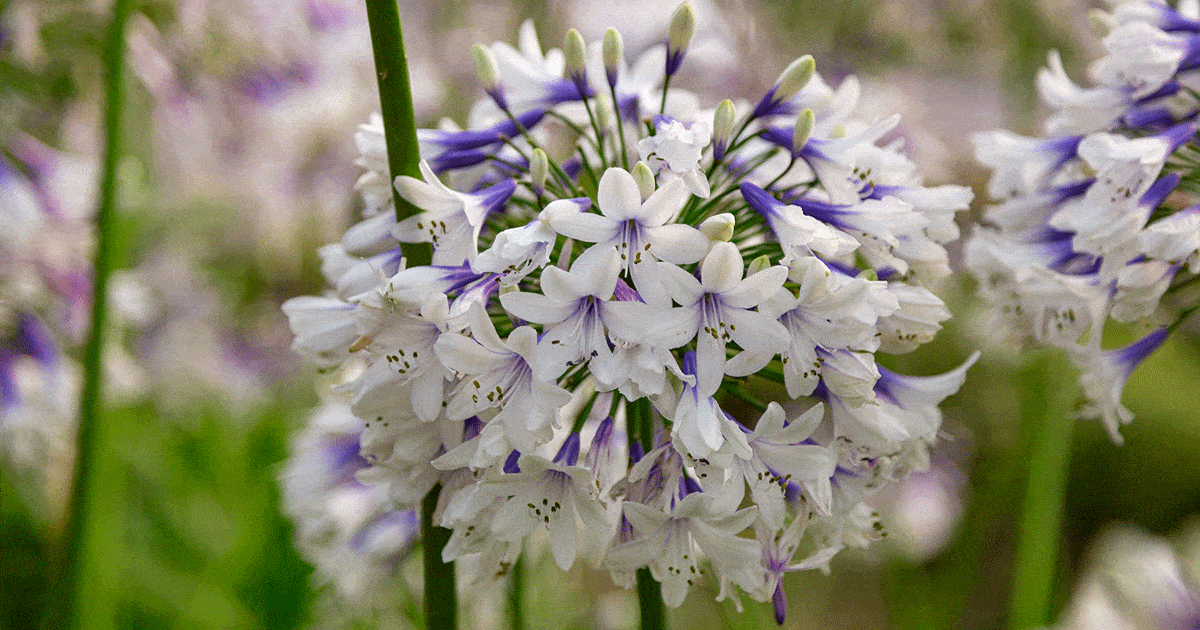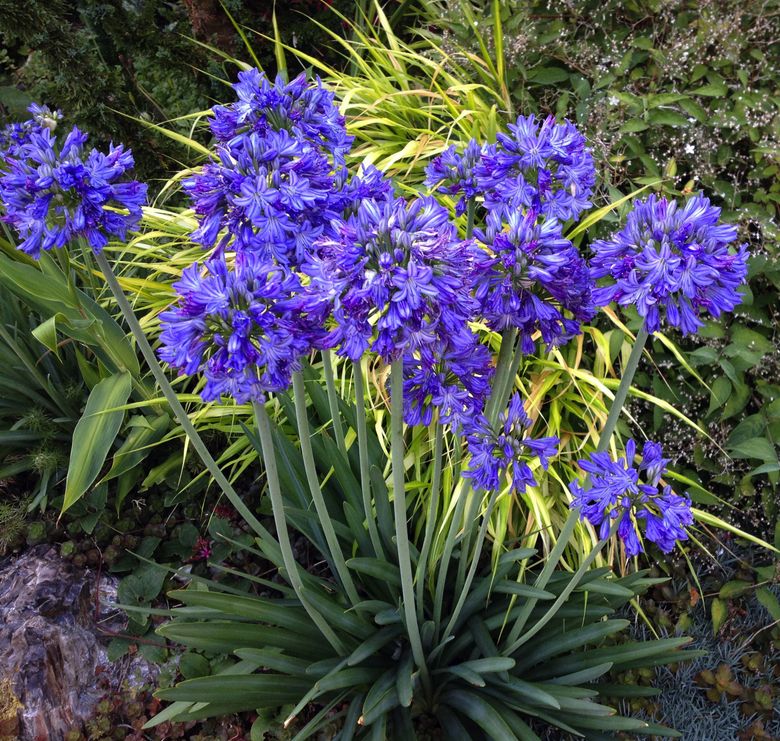How to Plant and Maintain Agapanthus in Your Garden
How to Plant and Maintain Agapanthus in Your Garden
Blog Article
Unleashing the Secret to Effective Agapanthus Growing: Idea for a Flourishing Yard
In the realm of horticulture, cultivating agapanthus efficiently needs a strategic technique that encompasses numerous aspects of plant treatment. With cautious attention to information, one can unlock the secrets to nurturing these stunning blooms, resulting in a yard that prospers with appeal and vibrancy. By comprehending the subtleties of agapanthus growing, one can create a setting where these plants grow and flower perfectly. In the complying with conversation, we will check out important ideas and tricks that will lead you towards a growing agapanthus garden, providing understandings into finest techniques, soil conditions, sprinkling strategies, and much more.
Planting Agapanthus: Finest Practices
When growing Agapanthus, proper soil prep work is essential for making certain successful growth and development of these stunning blossoms. Agapanthus, generally recognized as Lily of the Nile or African lily, thrives in well-draining dirt with a slightly acidic to neutral pH degree - Agapanthus. Before planting, it is vital to modify hefty clay soils with raw material such as garden compost or peat moss to boost drainage and provide important nutrients for the plants
To plant Agapanthus, pick an area that receives complete sunlight to partial shade, as this will promote healthy and balanced development and bountiful blooming. Dig a hole twice the size of the plant's root sphere and put the Agapanthus at the very same deepness it was previously expanding. Delicately backfill the opening with dirt, weighing down strongly to get rid of any kind of air pockets around the roots.
Water the newly planted Agapanthus extensively and remain to maintain the dirt equally wet, especially throughout the plant's active expanding period. Agapanthus. Using a well balanced plant food once a month can further support the plant's growth and flowering. By adhering to these ideal methods for planting Agapanthus, you can create a stunning display of these captivating blossoms in your garden
Ideal Dirt Issues for Agapanthus
For ideal growth and blooming success of Agapanthus plants, making certain the dirt conditions are perfect is important. Agapanthus flourishes in well-draining soil with a somewhat acidic to neutral pH degree ranging from 6.0 to 7.0. This kind of dirt allows for ample water drain, preventing waterlogging which can bring about root rot. To boost soil water drainage, take into consideration including raw material such as compost or peat moss when preparing the planting site. Moreover, Agapanthus favors soil that is rich in nutrients, so including a balanced plant food throughout the growing period can promote healthy and balanced development and vibrant blossoms.

Watering and Feeding Tips
To ensure healthy and balanced development and lively flowers, appropriate watering and fertilizing techniques are vital for successful Agapanthus farming. Agapanthus plants take advantage of normal watering, particularly during the growing period. It is advised to water deeply when a week, guaranteeing the soil is wet yet not soaked. During heat or in pots, more constant watering might be needed to avoid the soil from drying entirely.
When it pertains to fertilizing Agapanthus, a well balanced fertilizer with equivalent parts nitrogen, phosphorus, and potassium can be applied in the springtime to advertise healthy and balanced growth and flowering. Slow-release fertilizers are suitable for giving nutrients gradually over a prolonged duration. Avoid over-fertilizing, as this can bring about too much foliage growth at the expenditure of blooms.
Additionally, integrating raw material like compost right into the soil can enhance nutrient degrees and improve dirt framework, helping in the total health and wellness of the Agapanthus plants. By adhering to these watering and fertilizing ideas, gardeners can guarantee their Agapanthus plants thrive and create spectacular display screens of flowers.
Trimming and Deadheading Strategies
Proper trimming and deadheading methods play an important role in maintaining the wellness and visual appeals of Agapanthus plants, matching the necessary techniques of watering and fertilizing for successful cultivation. Trimming Agapanthus includes getting rid of spent flower heads, next page yellowing or dead fallen leaves, and overall shaping of the plant to promote much better development. Deadheading, the process of getting rid of discolored flowers, not just boosts the plant's look yet likewise encourages more blooming.
When deadheading Agapanthus, it is suggested to snip off the flower stem at the base making use of sharp, tidy shears. This process reroutes the plant's power from seed production back right into origin and vegetation growth, promoting a healthier and more robust plant. Routine deadheading can prolong the flowering duration of Agapanthus and avoid self-seeding, which can lead to overcrowding.
In regards to trimming, Agapanthus typically benefits from a light trim after flowering view it to clean the plant and urge fresh growth. Cutting back the invested blossom stems and getting rid of any dead or broken foliage helps preserve the plant's vigor and general appearance. Nevertheless, it is vital to avoid reducing right into the crown of the plant, as this can damage its health.

Protecting Agapanthus From Pests and Diseases
Carrying out effective pest and illness management strategies is crucial to protecting the health and vigor of Agapanthus plants in cultivation. Agapanthus are generally hardy plants, yet they can still succumb to various bugs and conditions otherwise effectively taken care of. One common parasite that influences Agapanthus is the Agapanthus borer, a caterpillar that passages right into the plant, creating damages to the blossoms and fallen leaves. To avoid invasions, normal examination of the plants is necessary. If borers are found, they can be manually gotten rid of, or insecticidal soap can be utilized as a control action.
In enhancement to pests, Agapanthus are susceptible to illness such as root rot and fungal fallen leave places. By remaining cautious and addressing insect and disease issues without delay, gardeners can aid their Agapanthus prosper and grow.

Conclusion
To conclude, successful farming of agapanthus needs correct planting techniques, suitable soil problems, sufficient watering and feeding, regular trimming and deadheading, and protection from conditions and pests. By adhering to these tricks and ideas, gardeners can make sure a growing yard loaded with beautiful agapanthus flowers. Agapanthus. Bear in mind Get the facts to keep consistent care and interest to information to advertise the health and durability of these stunning plants
When planting Agapanthus, appropriate dirt preparation is vital for ensuring successful growth and growth of these beautiful flowers.Water the recently grown Agapanthus thoroughly and continue to keep the dirt equally moist, especially during the plant's energetic expanding period.For optimal growth and flowering success of Agapanthus plants, guaranteeing the soil conditions are perfect is important. When growing or hair transplanting Agapanthus, ensure the dirt is well-prepared to supply the needed structure for the plants to establish themselves effectively. One common insect that affects Agapanthus is the Agapanthus borer, a caterpillar that tunnels into the plant, causing damage to the leaves and flowers.
Report this page